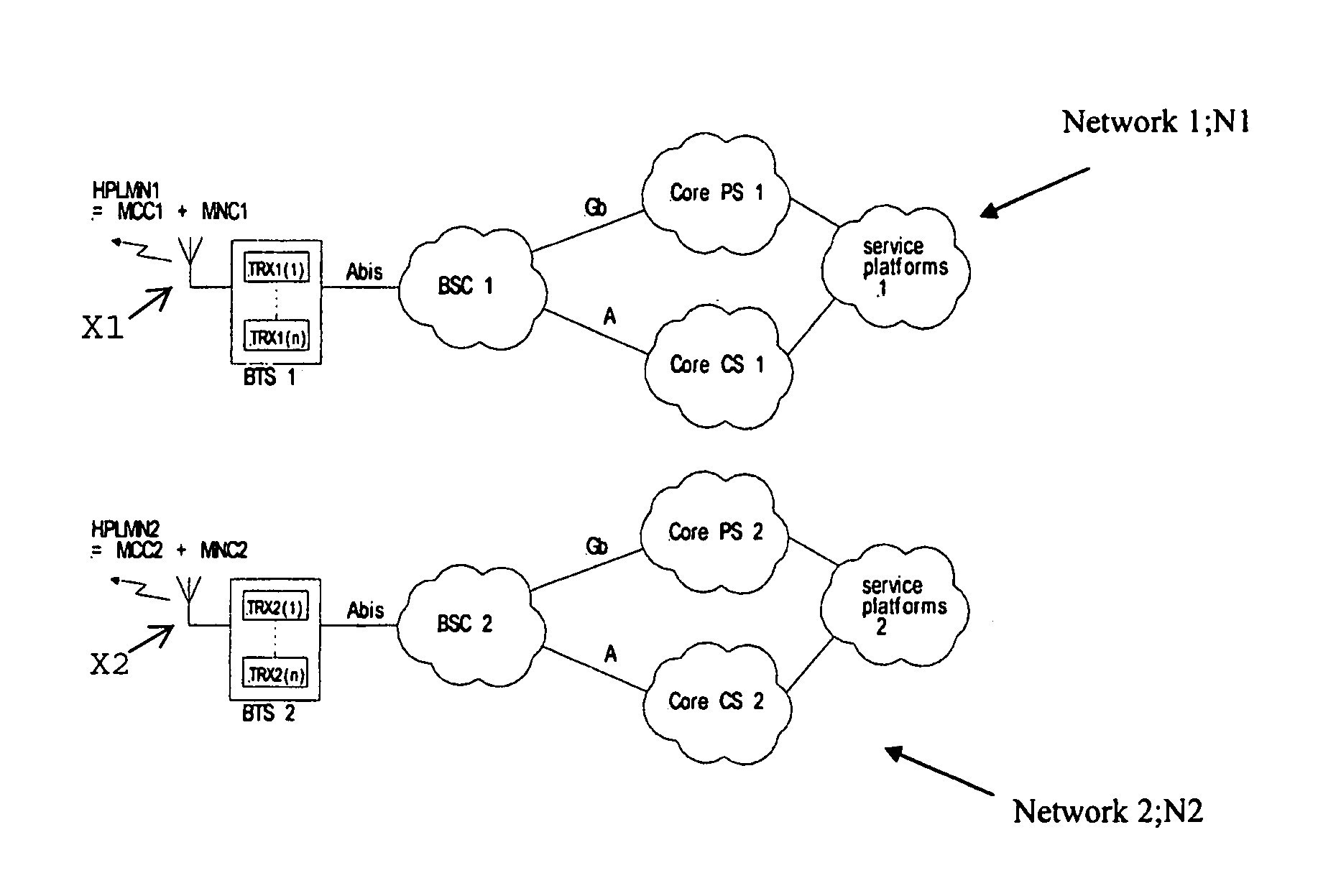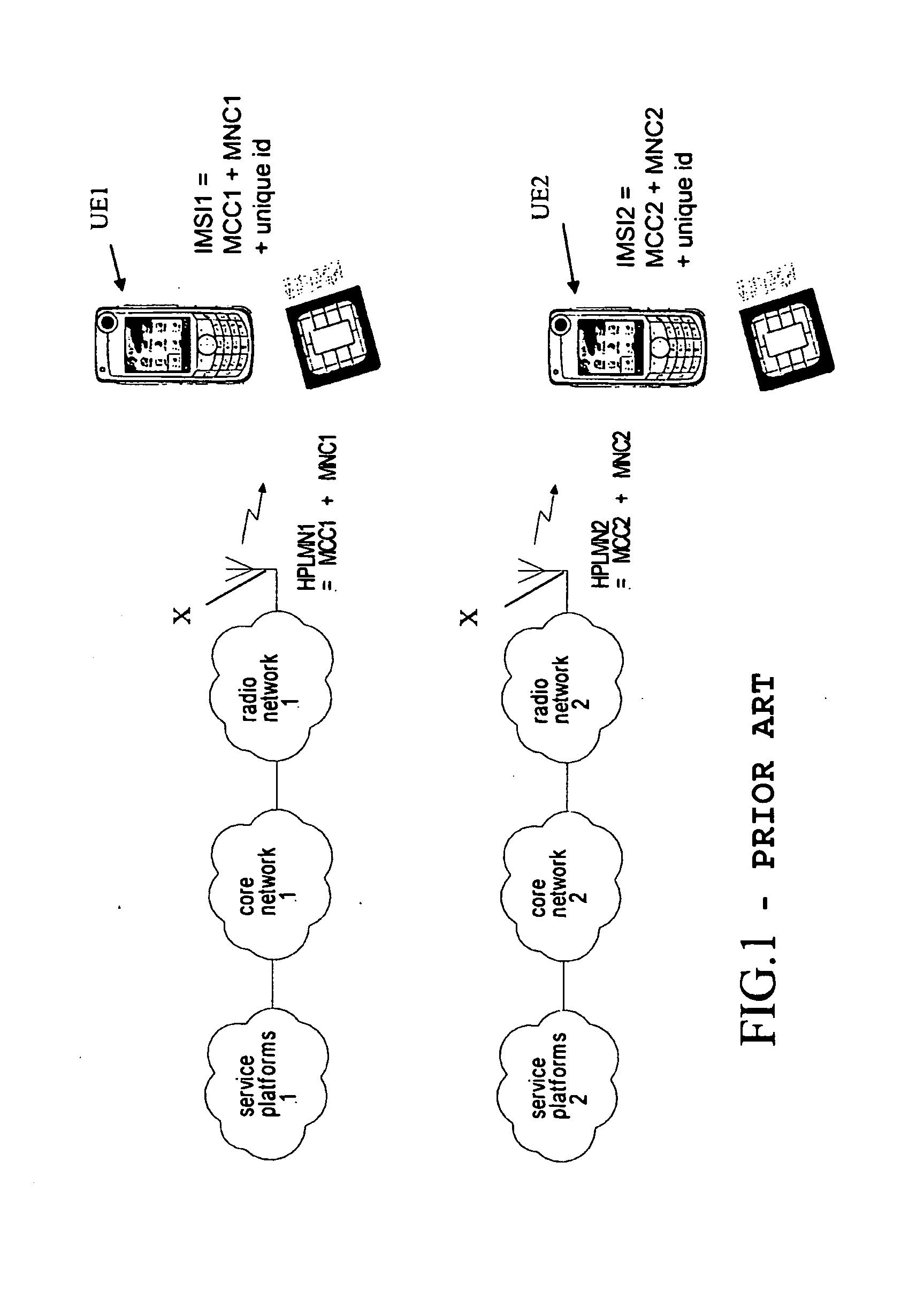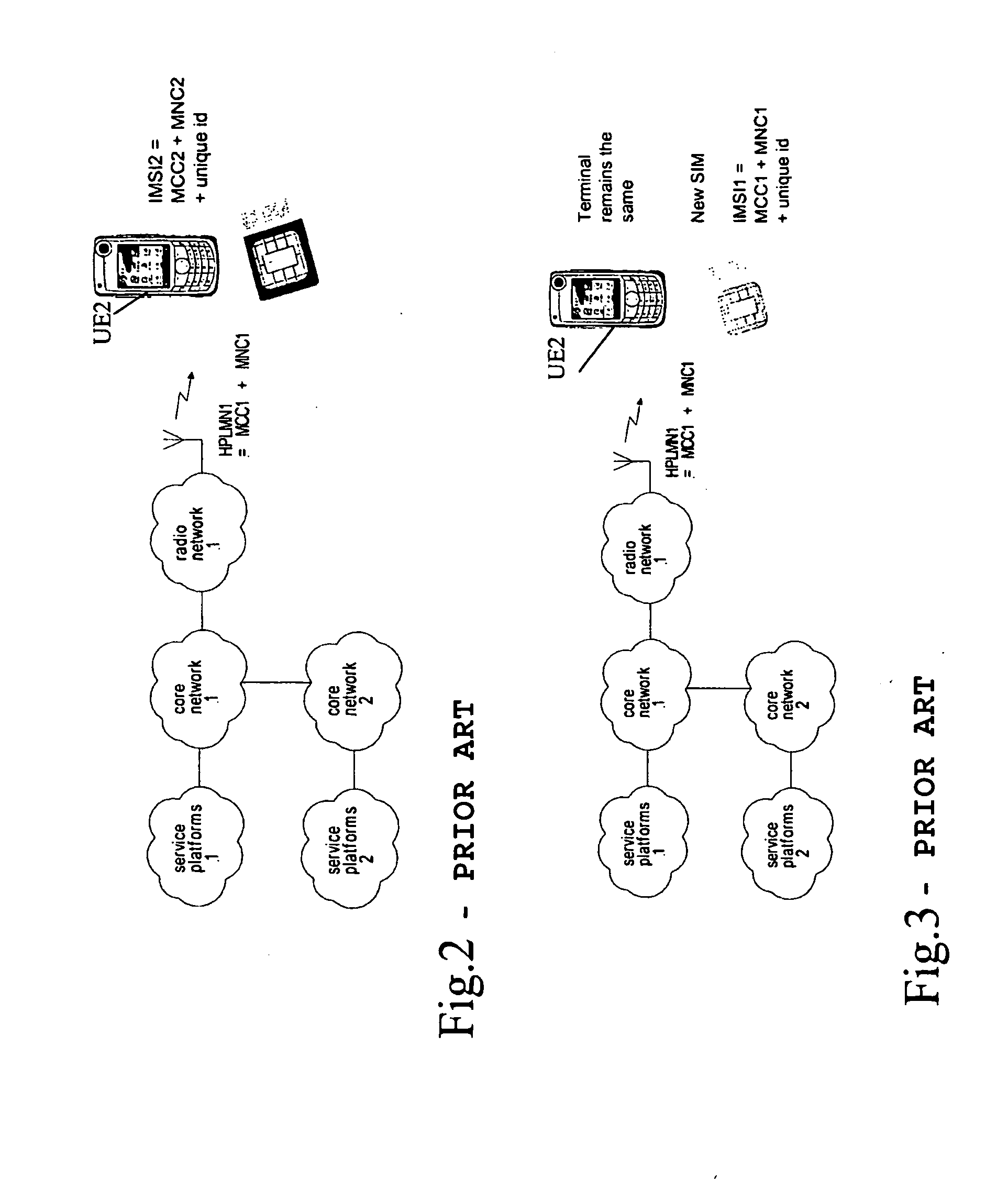Mobile network, mobile network base station and method to register a mobile terminal on a network
- Summary
- Abstract
- Description
- Claims
- Application Information
AI Technical Summary
Benefits of technology
Problems solved by technology
Method used
Image
Examples
first embodiment
[0122]According to an embodiment of the invention, the inventive concept relies on configuring at least one separate first transmitter-receiver (TRX1) (and preferably each) in the base station BTS1 of the first network to such an extent that first transmitter-receiver behaves on the first radio interface / antenna X1 as would a transceiver TRX2 of the second network. This is shown in FIG. 5. Also, more TRXs may be configured as second network TRXs, however at least one of those TRXs is preferably configured as BCCH TRX (broadcast channel TRX). This BCCH TRX continuously transmits pilot channels and broadcast channels during its operation, and amongst the PLMN code. Via this TRX, terminals UE are also able to register in the network.
[0123]Specifically, FIG. 5 shows an embodiment of the present invention having a (single) mobile network configured to broadcast a first network identity HPLMN1 and a (different) second network identity HPLMN2 to provide a first and a second network layer. ...
second embodiment
[0161]FIG. 6 shows a second embodiment of the invention which differs from the embodiment of FIG. 5 in that a second Core CS (“Core CS 2”) is provided and which is coupled to the first Core CS (“Core CS 1”) and to second network service platforms (“service platforms 2”).
[0162]The second embodiment can be called a “Separate core network variant”. In case a two-layer architecture is used to discard one network, e.g., a second network (Network 2), that architecture can migrate all service platforms from the old core network 2 to the remaining network 1. To circumvent this problem, in the alternative architecture according to FIG. 6, a route to the remaining core network 2 is added. All traffic, based on IMSI can be directed to core network 2.
[0163]For PS (Packet Switched), the need to do so is not high so it is rather simple to add APNs and migrate service platforms connected to PS network 2 to PS network 1.
third embodiment
[0164]FIG. 7 shows a third embodiment of the invention, which differs from the embodiment shown in FIG. 5 in that a third network layer is provided which relates to a (previous) third network. For example, in FIG. 7, one or more additional third transceivers TRX3 (of the first Base Station) are provided and configured to broadcast a third network identity HPLMN3 (including a third MCC and a third MNC), preferably, again, via the same radio interface and utilizing the same base station controller BSC1. Thus, this yields a three-layer architecture.
[0165]As follows from FIG. 7, the concept with two layers (see FIGS. 5 and 6) can be extended with additional layers, simply by configuring transceivers to accommodate more layers. Practical restrictions could occur which heavily depend on base station type and the traffic volumes for each layer.
[0166]Traffic Steering: Mutual Use of Resources Between Layers
[0167]Introduction
[0168]Illustratively, two separate and independent layers are create...
PUM
 Login to View More
Login to View More Abstract
Description
Claims
Application Information
 Login to View More
Login to View More - R&D
- Intellectual Property
- Life Sciences
- Materials
- Tech Scout
- Unparalleled Data Quality
- Higher Quality Content
- 60% Fewer Hallucinations
Browse by: Latest US Patents, China's latest patents, Technical Efficacy Thesaurus, Application Domain, Technology Topic, Popular Technical Reports.
© 2025 PatSnap. All rights reserved.Legal|Privacy policy|Modern Slavery Act Transparency Statement|Sitemap|About US| Contact US: help@patsnap.com



